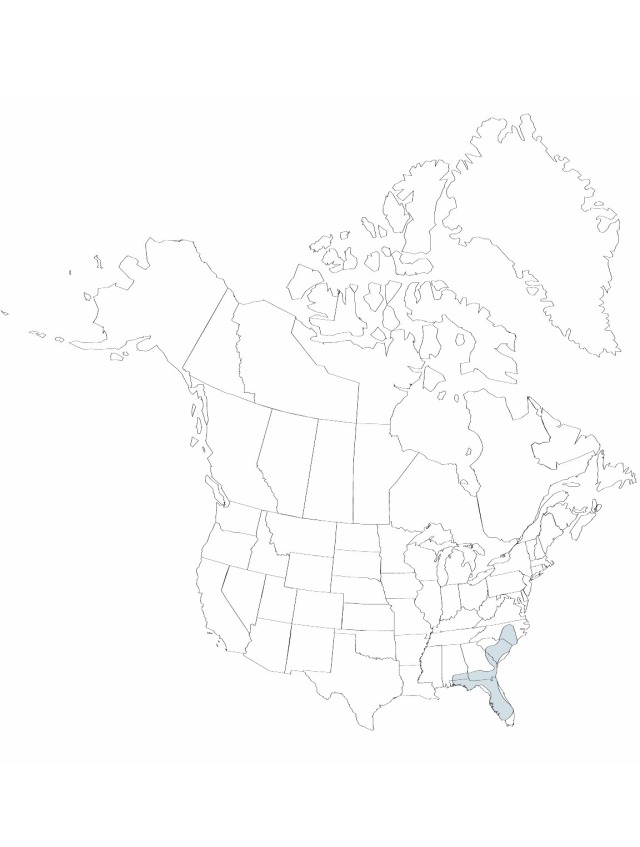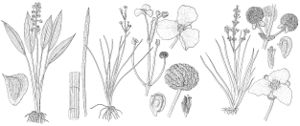Sagittaria isoetiformis
Rep. (Annual) Missouri Bot. Gard. 6:115, plate 53. 1895.
Herbs, perennial, to 65 cm; rhizomes absent; stolons present; corms present. Leaves emersed or submersed, phyllodial or rarely dilated apically, flattened, 4–40 cm × 0.05–0.4 (–0.5) cm. Inflorescences racemes, of 1–5 whorls, emersed, 2–20 × 1.5–12 cm; peduncles 7–59 cm; bracts connate more than or equal to ¼ total length, oblanceolate, 0.2–0.3 mm, delicate, not papillose; fruiting pedicels spreading, cylindric, 0.5–6 cm. Flowers to 1.3 cm diam.; sepals recurved to spreading, not enclosing flower; filaments dilated, shorter than anthers, minutely tomentose; pistillate pedicellate, without ring of sterile stamens. Fruiting heads 0.5–1 cm diam.; achenes obovoid, abaxially keeled, 2.2–2.8 × 1.5–2 mm, beaked; faces not tuberculate, wings 1–2, entire, glands 3–5; beak lateral, incurved-erect, 0.2 mm.
Phenology: Flowering summer–fall.
Habitat: Shores of sandy-bottomed lakes, se coastal plain
Elevation: 0–100 m
Distribution

Ala., Fla., Ga., N.C., S.C.
Discussion
Sagittaria isoetiformis has often been misidentified as Sagittaria teres (E. O. Beal 1960b). The two species can be separated, however: S. teres has nearly terete phyllodia, whereas S. isoetiformis has flattened phyllodia (R. K. Godfrey and P. Adams 1964). A study of the genetics of the two species shows them to be genetically different, and the data indicate the two taxa actually should be considered at the specific level. The two species are capable of CAM photosynthesis, a process very uncommon in the genus and found among none of their supposedly closely related species (A. L. Edwards, pers. comm.).
